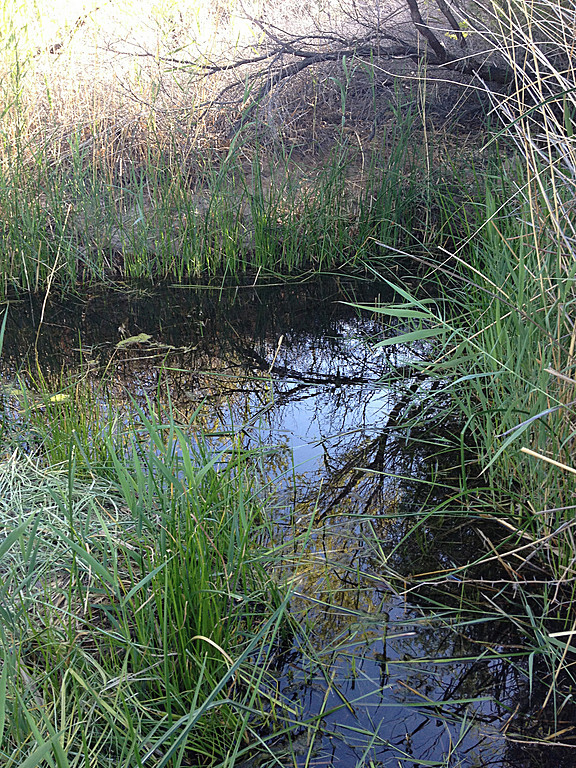
Shoshone pupfish are one of the most imperiled species in the Death Valley region due to their natural rarity, historic disruption of their habitats, lack of replication of the one remaining population, and genetic effects of small population size. Shoshone Spring and wetlands have been owned by one family for over 50 years. Endemic Shoshone pupfish were considered extinct by 1969, but rediscovered in a ditch near the springs in 1986. A single pond was built and stocked with 75 of these fish, believed to be the last of their kind. The purpose of the project was to construct two new additional habitats, one secluded in a mesquite bosque, and one in a landscaped tourist area. The project secured the existence of Shoshone pupfish in their native range far into the future, and will educate the public about their importance. The project quadrupled the habitat area occupied by endemic Shoshone pupfish, benefiting the entire known population in the one spring, springbrook, and spring supported riparian system where they naturally occur.
Purpose of the project:
Shoshone pupfish are one of the most imperiled species in the Death Valley region due to their natural rarity, historic disruption of their habitats, lack of replication of the one remaining population, and genetic effects of small population size. Shoshone Spring and wetlands have been owned by one family for over 50 years. Endemic Shoshone pupfish were considered extinct by 1969, but rediscovered in a ditch near the springs in 1986. A single pond was built and stocked with 75 of these fish, believed to be the last of their kind. The purpose of the project was to construct two new additional habitats, one secluded in a mesquite bosque, and one in a landscaped tourist area. The project secured the existence of Shoshone pupfish in their native range far into the future, and will educate the public about their importance. The project quadrupled the habitat area occupied by endemic Shoshone pupfish, benefiting the entire known population in the one spring, springbrook, and spring supported riparian system where they naturally occur. The long term extinction risk of Shoshone pupfish due to stochastic factors is greatly reduced by spreading the risk among three populations, instead of one. Cumulative loss of genetic diversity due to genetic drift will be slowed or arrested by increasing the population size. Creation of a pond suitable for public viewing and interpretation in an existing ecotourism area has the ancillary benefit of promoting public and business support for conservation of pupfish, wildlife, and the environment. The pond also benefits riparian birds, waterfowl, and neotropical migrant birds. There is now a series of ponds along the original stream leading to the Amargosa River where the first pupfish were found. It also includes a pond in a public area that is landscaped with native vegetation. Walking trails have been created to guide the public to view points, and interpretive signs will soon be placed around the pond to educate residents and visitors about the pupfish, its native habitat, the importance of sustaining all endangered species, and about biodiversity. In addition to being drawn by birding and ecotourism, visitors to Shoshone Village have begun to ask “where can I see the pupfish?”
Human Interest/Community Benefit:
The rural town of Shoshone is a Mojave Desert Community intentionally transitioning from a mining economy to one based on ecotourism. An abundance of natural thermal spring water makes this a literal oasis in the desert east of Death Valley National Park. Visitors are drawn for the birding, scenery, geology, cultural history, and to experience remote wilderness and the Wild and Scenic Amargosa River Corridor. Many of these visitors are from Europe or southern California, and have no idea there are fish living in the desert—much less have seen any. As the word spreads more people are deliberately travelling to Shoshone to sightsee for pupfish. Purposeful and casual pupfish visitors alike are inspired by the story of a manifestly successful rescue of a species from near-extinction.
Project Timeline: Project was completed in spring 2014
Economic Calculator results:
Jobs: 0.5078
Total Sales: USD 58,008.43
Value Added: USD 34,883.98
Income: USD 26,436.54
Partners: Desert Fish Habitat Partnership, US Fish and Wildlife Service, Shoshone Development Corporation, California Department of Fish and Wildlife
